

Coelbren was the site of a Roman marching fortress, shown right, from the air. The fort covered an area of four and a half acres and was constructed where the Roman road Brecon Gaer crossed the river Afon Pyrddyn. It would have housed around 320 infantry and up to 120 horse soldiers, although it had temporary capacity to take a full detachment of 500 cavalry and their mounts.
The area in the picture behind the site of the fort is now completing restoration from the ravages of open cast mining. Coelbren also borders a large area of wetland known locally as the Coelbren Bog. This is a site of special scientific interest (an SSI). The bog is traversed by a specially constructed walkway with railway sleepers simply floating on the bog in some places. It is a special habitat for wetland creatures including some that are now rare in Wales.
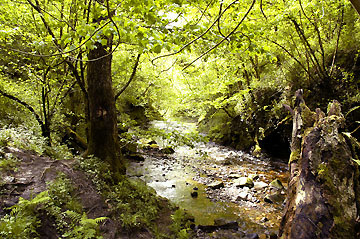
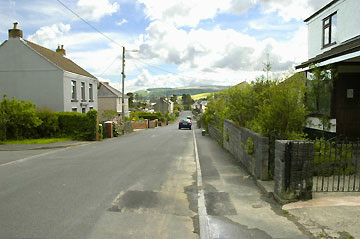
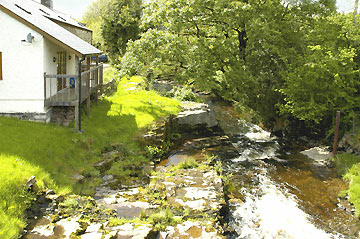
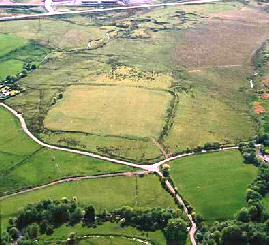
© Crown copyright: Royal Commission on the Ancient and Historical Monuments of Wales
© Hawlfraint y Goron: Comisiwn Brenhinol Henebion Cymru >>
Coelbren is also known for its spectacular Henrhyd Falls, the tallest waterfall in South Wales which was created by the slippage of a fault in the earths surface. The river Llech which pours over Henrhyd Falls has carved a steep sided heavily wooded valley which is a site of special scientific interest (SSI) as well as an important fossil site.
The Llech tumbles down to the river Tawe past The Wales Ape and Monkey Sanctuary, Coelbren grew when the Neath-Brecon railway was built and anthracite was mined locally and distributed by the rail network. Today it is a pleasant village with some of the best views of the lovely Upper Swansea Valley.
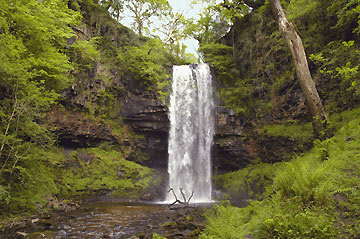
COELBREN